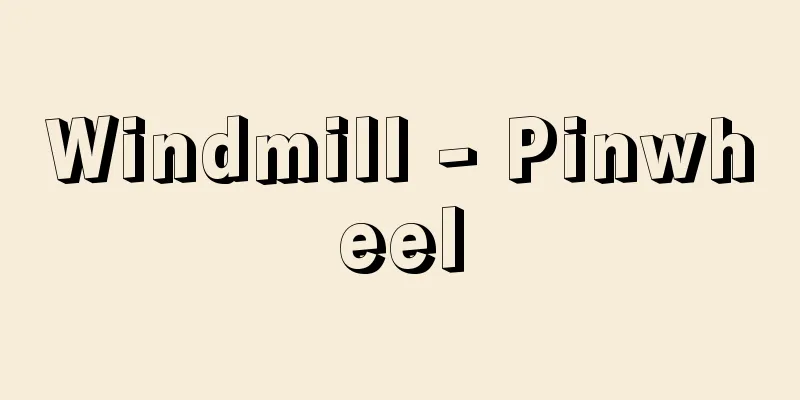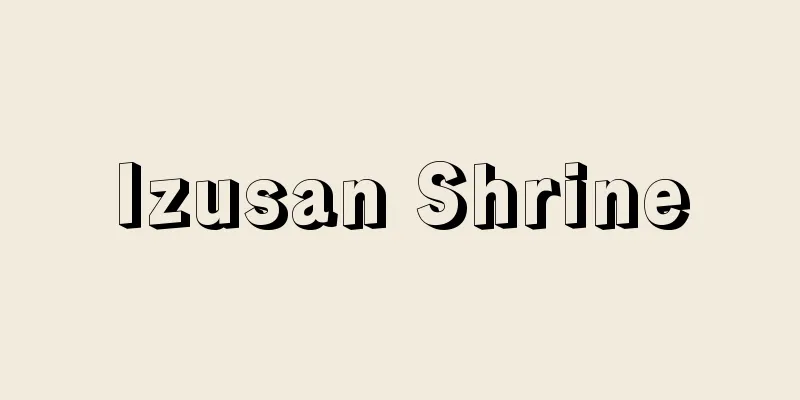Windmill - Pinwheel

〘Noun〙 (also "kazakuruma")① A device that uses wind to act on a bladed wheel as a power source. Used for drawing water and pounding rice. A windmill. ※Nazodate (1516) "The storm has left the mountains, and the kazakuruma is at the eaves." ※Waga Omoi (1907)〈Kaneko Kunen〉"In Tono, where the windmill goes round, the cows lie down and the water can be seen above them, in the spring." ② A type of child's toy. A wheel-shaped object made of paper or celluloid with a handle attached, which is rotated by the wind. 《Season・Spring》※Soukonshu (around 1473) 10 "If you pick it up, you will see the windmill blowing by you, a sign that you will be able to go round." ③ The name of a crest. A stylized version of a toy windmill. ④ A type of overcoat from around the mid-Meiji period. ※Tokyo Fuzokushi (1899-1902) by Hiraide Kojiro: "The 'Kitobi' coats worn in the early Meiji period fell out of fashion and were replaced by windmills ." ⑤ A metaphor for poor economic conditions. A hard life. A wheel on fire. ※Sooth (1909) by Morita Sohei: "The family had a windmill all year round, and the village's most friendly temples always borrowed money." ⑥ A deciduous vine of the Ranunculaceae family. It grows wild in Honshu, Shikoku, and Kyushu, and is also cultivated for decorative purposes, and there are also horticultural varieties. It is covered with short hairs all over, and the leaves are made up of three egg-shaped leaflets that are opposite and have pointed tips, with a stalk that entangles itself with other plants. In early summer, flower stalks grow from the tips of the branches, and white or pale purple flowers about 10 centimeters in diameter bloom. It is similar to the Japanese quince, but differs in that it does not have bracts on the flower stalk and usually has eight petals .fu-sha [windmill]Source: The Selected Edition of the Japanese Language Dictionary About the Selected Edition of the Japanese Language Dictionary Information |
〘名〙 (「かざくるま」とも)① 風を羽根車に作用させて動力源とする装置。水くみや米つきなどに使われる。ふうしゃ。※なぞだて(1516)「あらしは山をさって軒のへんにあり かさくるま」※わがおもひ(1907)〈金子薫園〉「風車めぐる遠野に臥す牛の上に水見るおらんだの春」② 子どもの玩具の一種。紙やセルロイドなどで作った車輪形のものに柄をつけて、風力で回転させるもの。《季・春》※草根集(1473頃)一〇「手にとればそなたにより吹く風車めぐりあふべきしるしとぞ見ん」③ 紋所の名。玩具の風車を図案化したもの。④ 明治中期頃の外套の一種。※東京風俗志(1899‐1902)〈平出鏗二郎〉中「外套は明治初年に行はれし『トンビ』廃れて、風車(カザグルマ)起り」⑤ 経済状態のよくないことをたとえていう。生活が苦しいこと。火の車。※煤煙(1909)〈森田草平〉一「家は年中風車で、村でも気の好さ相な檀那場では必ず借銭をした」⑥ キンポウゲ科の落葉性のつる植物。本州、四国、九州に野生し、また、観賞用に栽培され、園芸品種もある。全体に短毛が生え、葉は対生で先のとがった卵形の三小葉からなり、他物にからむ柄を持つ。初夏、枝の先端に花柄を伸ばし、径一〇センチメートルぐらいの白または淡紫色の花を開く。テッセンに似ているが、花柄に対生する苞(ほう)がないことや、花びら(がく)が普通八個ある点が違う。《季・夏》※俳諧・玉海集(1656)二「風車といふ草花をみて、おさあひの慰草かかさくるま〈貞昌〉」
ふう‐しゃ【風車】出典 精選版 日本国語大辞典精選版 日本国語大辞典について 情報 |
<<: Scorpion fish (Kasago) - Scorpion fish
Recommend
Crime and Punishment - Crime and Punishment
A book on criminal law written in 1764 by the Ital...
Shinto offerings - Jingishiryo
A research book written in preparation for the com...
Zemstvo (English spelling)
A Russian local self-governing organization. The o...
Zaanstad
…an old industrial area in the province of North ...
Sousa Carvalho, J.de (English spelling) SousaCarvalhoJde
…Evora was a religious center, and in the 16th ce...
Ambrosia fungus
...The family of bark beetles can be broadly divi...
Father and Son - Oyakodaka
A metaphor for the superior abilities of both fath...
Mount Tsukuba - Tsukuba-san
A mountain in western Ibaraki Prefecture. It cons...
Shibuya
The area is located in the southern part of Shibu...
Toyama Domain
A division of the million koku Kaga Domain. In 16...
Kanto Women's Union
A birthless women's organization affiliated wi...
Urakata
〘Noun〙① A name for a seaside or fishing village us...
Ridge Line - Onesen
...Then it rises northward over the Korean Penins...
Taisho Democracy - Living in the Taisho Era
This refers to the democratic and liberal tendenc...
Ikuchi-so
...The administrative area of Setoda Town inclu...









